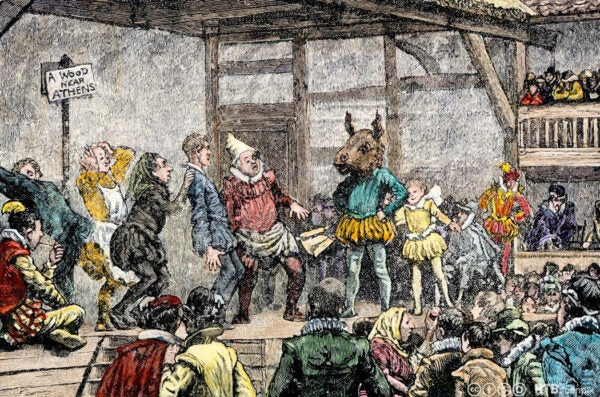Wel-diddly-elcome to the absoschmuckinglutely crizazy world of English infixation.
Where some other languages may soberly cherish the sanctity of their word forms and vocabulary, English is notorious for being playful and expressive with its linguistic morphology or word-building. Well-known examples of the infixation phenomenon are the colorfully offensive expletive infixation, the so-called Homeric ma-infixation, the Flanderian diddly-infixation and hip hop’s ‘iz’/’izn’ infixation (shiznit and the like). But what exactly is infixation?
Most readers will already be familiar with more common word-building processes such as prefixation and suffixation, in which an affix is added to the beginning or end of a base word respectively. These morphological processes usually alter the meaning, case, or part of speech of the word and so have a grammatical purpose:
Prefix de-: de + activate ‘deactivate’ (the opposite of activate)
Suffix -hood: child + hood ‘childhood’ (the state of being a child).
Prefixes and suffixes of course can be enthusiastically layered on top of one another, like the long and short of semihemidemisemiquaver, yet can often still be meaningfully reconstructed and understood, or perhaps misunderstood, or even misunderestimated. Take note of the unwieldy pile of affixes in the case of one of the longest words in the English language, anti-dis-establish-ment-ari-an-ism.
Infixation is yet another morphological process which occurs internally in a base word, rather than at either end of the base. In other languages such as Tagalog, Leti and some dialects of Mandarin, infixation is used for Very Serious and Important grammatical functions, in similar ways to prefixation and suffixation in English, commonly changing the grammatical use of the word.
Instances of infixation in English, however, are mostly found in non-standard vernacular speech and usually add a playful, extra-grammatical sense to the word rather than changing its grammatical meaning. For example, the process of expletive infixation is used for added emotional emphasis, while ma-infixation, made famous by Homer Simpson, as described by Alan Yu, layers a nuance of pseudo-sophisti-ma-cation onto a word. Despite their use in slang rather than standard language, linguists have found that these infixes follow systematic phonological rules in the way they may be placed and these rules tell us a lot about prosodic structure and the internal linguistic knowledge of speakers of the language.
In expletive infixation, common obscene expletives or their milder variants, such as fucking/fuckin, freaking, flipping, effing, goddamn, damn (and bloody/blooming in British and Australian English contexts) are inserted productively into words to express a stronger vehemence.
- absolutely: abso-fucking-lutely, abso-bloody-lutely, abso-goddamn-lutely, abso-freaking-lutely
- Minnesota: Minne-fucking-sota
- fantastic: fan-bloody-tastic
We can see how different expletives can be inserted in exactly the same space in the word absolutely. English speakers can also quickly note that constructions such as *ab-fucking-solutely (infixed after the first syllable) and *fanta-bloody-stic (infixed after the second syllable) are technically possible yet do not sound right (linguistically indicated by an asterisk). This is the case even though the expletive happily appears after the first syllable in fan-tastic but the second syllable after abso-lutely. They somehow violate the unwritten rules of this infixation construction. Why is this so?
In his 1982 study on English prosodic structure and expletive infixation, John J. McCarthy outlines how this productive process can be described in terms of certain complex rules of word stress placement and metrical feet. To simplify matters, the expletive infix may be placed preceding a stressed foot of a word. The stress happens to occur on the third syllable of absolutely and the second in fantastic and so dictates where the expletive infix can be placed. This idea is discussed and developed further in Alan C. L. Yu’s 2004 paper Reduplication in English Homeric Infixation, in which he gives the following examples of the ma-infixation construction:
- saxophone: saxo-ma-phone
- secretary: secre-ma-tary
- Mississippi: Missi-ma-ssippi
- hippopotamus: hippo-ma-potamus
What’s interesting is that native English speakers will already have absorbed a knowledge and intuition of how to apply these infixation processes to new words and constructions without actually knowing any overt rules of metrical stress. Speakers will also know where not to apply the infix. For example, for a word that may not commonly appear with an expletive infix in slang, such as instantiate, in-fucking-stantiate will naturally sound right to an English speaker and not right as *inst-fuckin-antiate, as we can see in the following novel examples from McCarthy’s paper:
- amalga-bloody-mated
- emanci-motherfuckin-pator
- every-bloody-body
- handi-bloody-cap
- hypo-bloody-crite
- kinder-goddamn-garten
- Lauder-damn-dale
Similar processes such as Ned Flanders’ diddly-infixation (in words such as wel-diddly-elcome) and the iz/izn construction found in hip hop slang, in words like shiznit, hizouse, show further how regular morphological processes used grammatically in other languages can be employed playfully in English to extend a word’s expressive sense.
Though these non-standard slang forms may be fun and inventive, they still do follow rules of English word-building, which we happen to know already, though we may not be aware of it. So the more we play with these types of word constructions, the more evidence we’ll have to further edumacate ourselves about some of these hidden rules of language.







